What would it take for you to take off all your clothes in front of thousands of people? One million US dollars was enough for Juan James Rodriguez, who took up the bet offered by US billionaire Alki David to become the first person to streak in front of US President Barack Obama at a rally in Philadelphia last Sunday.
Then again, US$1 million would probably be quite tempting for a lot of people: not least as rather too much booze and shameless exhibitionism are all that is generally required. In the early days of streaking — the 1970s and 1980s — the cameras tended to linger lovingly on streakers, especially the women, but now they tend to pan away. “No one wants to give any extra publicity to them,” says BBC soccer commentator David Pleat. “Broadcasting pictures would just give the sport a bad name and encourage copycats.” Yet there is no sign of any let up in the numbers prepared to drop all for a moment’s attention.
At the Ryder Cup on Oct. 4, a man wandered on to the 18th green, wearing nothing but a sun hat, red cape, socks and shoes (naturally — you wouldn’t want to get your feet muddy) and a novelty G-string. And at the Carling Cup game between Scunthorpe and Manchester United last month, a Danny Goldie ran on to the pitch wearing even less, to the delight of the home fans who chanted, “Fergie, Fergie sign him up.” Goldie now has his own Facebook fan site.
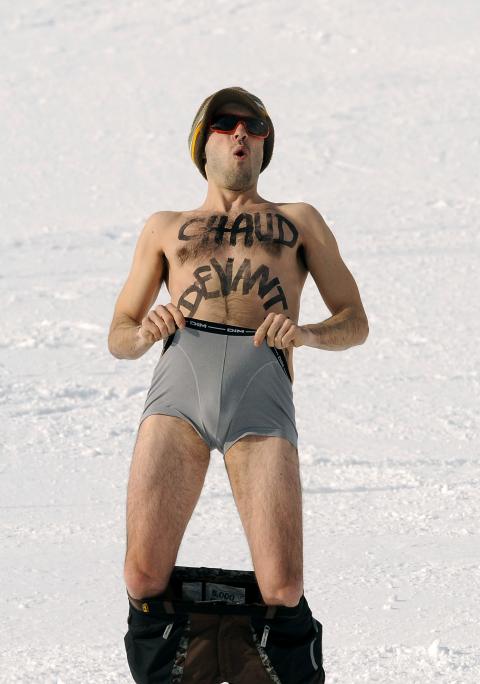
Photo: Agencies
The first recorded streak was done for a bet — plus ca change — in 1799 when an unknown man accepted a wager of 10 guineas to run naked from Cornhill to Cheapside in London. But it only became a modern cultural phenomenon in 1973 after a mass nude run by students at the University of Maryland.
The following year, a 25-year-old Australian, Michael O’Brien, stripped off at Twickenham during an England vs France rugby international. The resulting photograph, of O’Brien with arms out-stretched being restrained by a couple of policeman while a third placed his helmet over his privates, achieved iconic — almost biblical — status.
Certainly since then, streaking has been a recurring feature of sporting events throughout the world — though mainly, it must be said, in those countries with strong Anglo-Saxon affiliations — with both men and women equally keen to make a spectacle of themselves, though women are more likely to keep the lower half of their bodies covered.
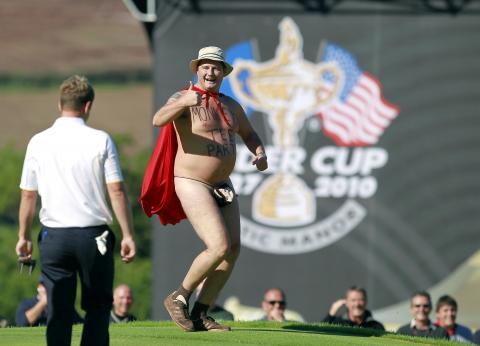
Photo: Agencies
The first woman to achieve any lasting notoriety in the UK was Erica Roe, who ran topless at Twickenham (again) during an England vs Australia international in 1982 after accepting a dare from a friend. This time the policeman’s helmet covered a breast in another photo-opportunity that traveled the world. “I blame my elder sister Sally, who was going with a clutch of rugger-bugger friends and roped me in,” she told the Observer some years later. “About 25 of us arrived and went straight to the beer tent. I was definitely tipsy. I couldn’t do anything so ridiculous as streaking cold-blooded!
“We were getting a bit bored, thought we should do something, and within seconds had decided ‘let’s streak.’ It was an impulse thing. We threw our clothes off. I handed my bra to some people behind me — and my packet of Marlboro. Halftime arrived, and off I went. I remember running like hell, knowing I was being pursued and looking back for [my sister] Sarah, who didn’t join me. I heard all this screaming and thought, ‘I have to get off, the second half is starting.’ But I quickly realized the roar was for me. Then, of course, I behaved like an egotistical bitch, put my arms in the air and went, ‘Yes! Hi!’”
The tabloids went mad for a week, but Roe herself decamped to Portugal to grow sweet potatoes and live the quiet life.
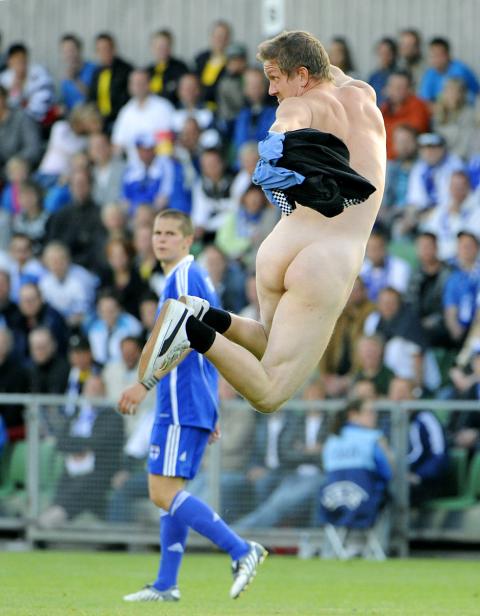
Photo: Agencies
Not that anyone really expects to make a career out of streaking. Jacqui Salmond, who stripped in front of Tiger Woods at the 2000 British Open, now works in a charity shop. At the time she was a lap dancer working in a pub in Kirkcaldy, Scotland, and had been watching a golf tournament on TV. “The whisper of the commentator and polite applause were enough to send me into a coma,” she later told a magazine. “Then it hit me. I knew what would get the crowd excited. A streaker. And who better than me? I wasn’t shy about flashing a bit of flesh. The appeal of an even bigger audience was just too much to resist.
“I burst through the cordon and legged it towards the 18th hole. Adrenaline raced through me. For a moment there was silence, followed by a few gasps and titters. ‘Wahey,’ one bloke shouted. Then everyone started cheering. Egged on by the crowds I even did a little victory dance.”
Even in the US, where streaking is often also used as a mild form of political dissent, it’s still classified under naughty but somehow nice. In fact, just about the only place you are likely to come to grief as a streaker is if you’re a male at an Australian sporting event. For some reason, Australian sports stars often find the sight of men running naked on to their place of work as an affront to their own sexuality and feel the need to wrestle them heavily to the ground.
The truth is, no one is really offended by streakers any more. They get a brief mention in the press, a small fine, and then go back to their lives.

From the last quarter of 2001, research shows that real housing prices nearly tripled (before a 2012 law to enforce housing price registration, researchers tracked a few large real estate firms to estimate housing price behavior). Incomes have not kept pace, though this has not yet led to defaults. Instead, an increasing chunk of household income goes to mortgage payments. This suggests that even if incomes grow, the mortgage squeeze will still make voters feel like their paychecks won’t stretch to cover expenses. The housing price rises in the last two decades are now driving higher rents. The rental market
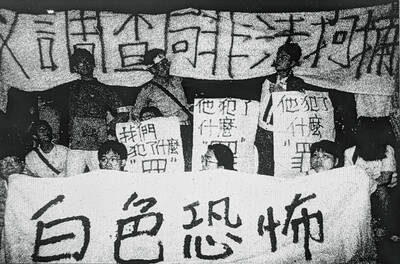
July 21 to July 27 If the “Taiwan Independence Association” (TIA) incident had happened four years earlier, it probably wouldn’t have caused much of an uproar. But the arrest of four young suspected independence activists in the early hours of May 9, 1991, sparked outrage, with many denouncing it as a return to the White Terror — a time when anyone could be detained for suspected seditious activity. Not only had martial law been lifted in 1987, just days earlier on May 1, the government had abolished the Temporary Provisions Effective During the Period of National Mobilization for Suppression of the Communist
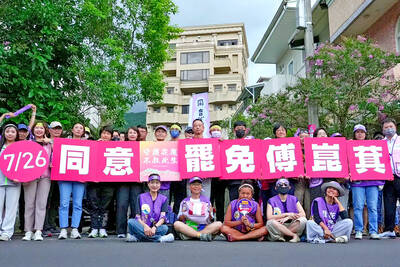
Hualien lawmaker Fu Kun-chi (傅?萁) is the prime target of the recall campaigns. They want to bring him and everything he represents crashing down. This is an existential test for Fu and a critical symbolic test for the campaigners. It is also a crucial test for both the Chinese Nationalist Party (KMT) and a personal one for party Chairman Eric Chu (朱立倫). Why is Fu such a lightning rod? LOCAL LORD At the dawn of the 2020s, Fu, running as an independent candidate, beat incumbent Democratic Progressive Party (DPP) lawmaker Hsiao Bi-khim (蕭美琴) and a KMT candidate to return to the legislature representing
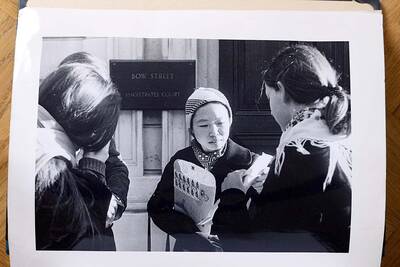
Fifty-five years ago, a .25-caliber Beretta fired in the revolving door of New York’s Plaza Hotel set Taiwan on an unexpected path to democracy. As Chinese military incursions intensify today, a new documentary, When the Spring Rain Falls (春雨424), revisits that 1970 assassination attempt on then-vice premier Chiang Ching-kuo (蔣經國). Director Sylvia Feng (馮賢賢) raises the question Taiwan faces under existential threat: “How do we safeguard our fragile democracy and precious freedom?” ASSASSINATION After its retreat to Taiwan in 1949, the Chinese Nationalist Party (KMT) regime under Chiang Kai-shek (蔣介石) imposed a ruthless military rule, crushing democratic aspirations and kidnapping dissidents from